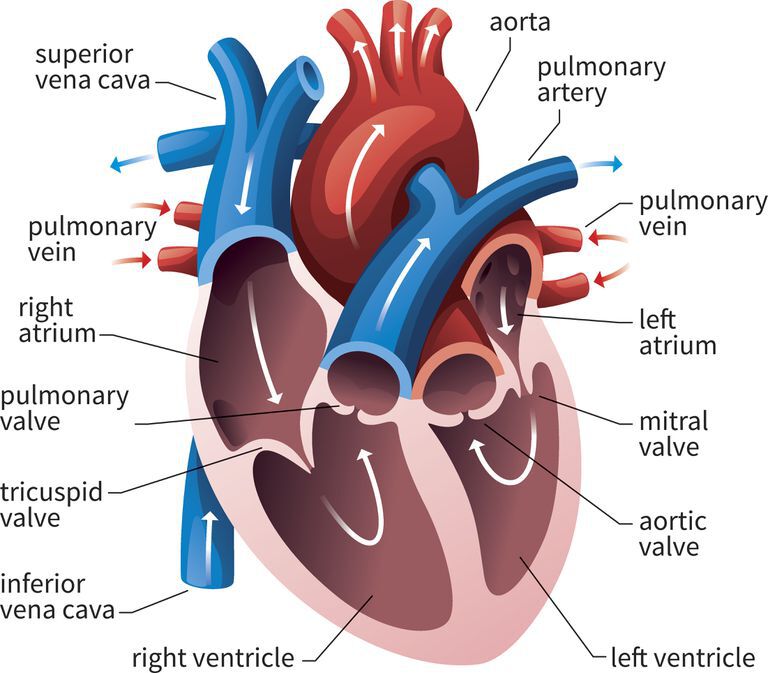EKG/ECG
Interpretation
A complete step-by-step beginners guide to a rapid interpretation of the 12-lead EKG and on how to diagnose and treat
arrhythmias.
Copyright 2020 by Nurse Academy- All rights reserved.
The content contained within this book may not be reproduced, duplicated or transmitted without direct written permission from the author or the publisher.
Under no circumstances will any blame or legal responsibility be held against the publisher, or author, for any damages, reparation, or monetary loss due to the information contained within this book. Either directly or indirectly.
Legal Notice:
This book is copyright protected. This book is only for personal use. You cannot amend, distribute, sell, use, quote or paraphrase any part, or the content within this book, without the consent of the author or publisher.
Disclaimer Notice:
Please note the information contained within this document is for educational and entertainment purposes only. All effort has been executed to present accurate, up to date, and reliable, complete information. No warranties of any kind are declared or implied. Readers acknowledge that the author is not engaging in the rendering of legal, financial, medical or professional advice. The content within this book has been derived from various sources. Please consult a licensed professional before attempting any techniques outlined in this book.
By reading this document, the reader agrees that under no circumstances is the author responsible for any losses, direct or indirect, which are incurred as a result of the use of information contained within this document, including, but not limited to, errors, omissions, or inaccuracies.
ISBN: 9798451785478
First Edition: October 2020
Second Edition: July 2021
Third Edition: October 2021
TABLE OF CONTENTS
Introduction
The first recording in a human of the electrical potentials generated by the heart from the body surface (electrocardiogram) is believed to have been obtained in London, in 1869 or 1870, by Alexander Muirhead, a telegraph engineer. He used equipment designed to record signals from the newly laid transatlantic cable.
The first detailed description of the electrocardiogram was published by Augustus Waller in 1887. Dr. Waller produced his recordings using a device known as a capillary electrometer. He called his recording a "cardiograph." His early recording apparatus included a photographic plate mounted on a toy train. Many of Wallers early cardiographs were obtained from his bulldog, Jimmie, which led to him having to defend himself against charges of animal cruelty leveled by the humane society. Fortunately, he convinced the House of Commons that recording an EKG was not cruel.
It was only after the introduction of the more convenient string galvanometer, developed by Willem Einthoven in 1903 that clinical electrocardiography became practical. Einthoven, the "father of electrocardiography," received the Nobel Prize for Medicine, in 1924, for his studies of cardiac electrical activity. It is Einthoven who discovered that the important waves recorded by electrocardiograms were those that had been labeled "P," "Q," "R," "S," and "T." His paper, written in German, discussed the elektrokardiogramm, thus explaining the use of the abbreviation "EKG."
The electrocardiogram (ECG or EKG) is a device that detects the electrical activity of the heart for heart problems to be diagnosed. It displays this as line tracings that are printed on paper .
An ECG and an EKG are one and the same. The German translation for electrocardiogram is elektro-kardiographie, which is shortened to EKG.
An ECG/EKG has numerous uses:
When combined with special algorithms (calculations), this device can study numerous biometrics (measurements related to a persons biology), as follows:
Although the ECG gives us several details about the heart, it cannot predict if the person will have a heart attack or when it will happen. It may not adequately pick-up heart problems; someone with heart disease may have a normal EKG. Because of this, the doctors will also look at other factors such as the medical history, other symptoms present, physical examinations, and additional tests.
Sometimes, a problematic EKG output only registers during exercise, scenarios when the heart is stressed, or while the patient is currently experiencing the symptoms. For these instances, ambulatory (walking) and stress EKGs are done.
An EKG done while a person has a heart attack may seem normal or the same as his/her previous EKGs. When this happens, the EKG is repeated over a period of time, such as over several hours or a few days, to detect significant changes. These are labeled as serial EKGs.
The heartbeat is the ECG. Nodes generate electrical impulses, which are VERTICAL PLANE LEADS (I, II, III, AVR, AVL, AVF) conducted through channels, eventually reaching the heart muscle to prompt contraction, which is represented on the ECG. Hence, any problems occurring along this pathway or involving any of the structures comprising it elicits some deviation from the normal ECG reading. We will soon realize that this is nearly ALL cardiac diseases. This is why being adept at the ECG is of such importance.
Chapter 1. Anatomy of The Heart
The human heart is a muscular hollow organ. Its size is approximately equal to the closed fist of a person, but It is responsible for pumping blood throughout the body.
Heart consists of four muscular chambers:
Right Atrium
Right Ventricle
Left Atrium
Left Ventricle
These four chambers are separated by each other through four valves.
Aortic valve
Pulmonary valve
Bicuspid valve
Tricuspid valve
Both ventricles are separated by each other through the interventricular septum.
The interatrial septum separates both atria.
Four main layers are:
Pericardium
Epicardium
Myocardium
Endocardium
Four major vessels attaching with heart:
Pulmonary arteries
Pulmonary veins
Heart Chambers
Anatomically heart is a single structure, but physiologically heart is divided into two sides: the right side and the left side.
The right side of the heart consists of the right atrium and right ventricle.
The left side of the heart consists of the left atrium and left ventricle.
The right side and left sides of the heart are anatomically separate by the atrial septum and the ventricular septum.
The two sides of the heart are two separate pumps and primarily work independently of each other.
Both atria are smooth-walled low-pressure chambers mainly designed to receive blood from attached vessels.
While both ventricles have thick muscular walls to catch blood from atria and push it with pressure into attached vessels. The walls of the left ventricle are flashy and more muscular than the right ventricle.
The interventricular septum is more muscular and thicker as compared to the interatrial septum.









